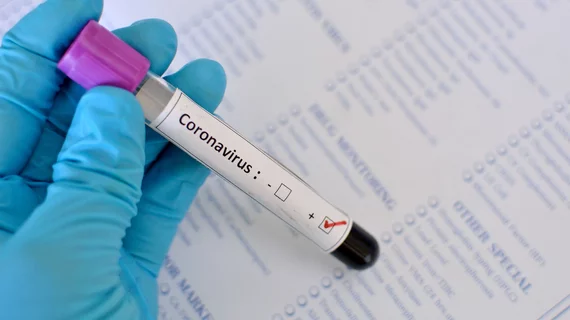As China continues to try and contain the spread of coronavirus, researchers report using chest radiography to identify the sickness in a new situation.
A team from Ho Chi Minh City in Vietnam detailed the case Jan. 28, in the New England Journal of Medicine, of a 65-year-old man who acquired the virus after travelling to Hanoi from the Wuchang district in Wuhan with his family. There are now more than 4,500 confirmed cases of 2019-nCov across the globe with 100 deaths.
The epicenter of the outbreak is believed to be a Huanan seafood market in Wuhan, known as a “wet market,” where dead and live animals are sold. While the majority of cases remain in China, this most recent study raises fears about the possibility of human-to-human transmission of coronavirus.
The current incident involves a man with a history of hypertension, type 2 diabetes, coronary heart disease and lung cancer who was admitted to the emergency department at Cho Ray Hospital in Ho Chi Minh City on Jan. 22 with low-grade fever and fatigue. He had flown from Wuhan with his wife and was suffering from a fever four days after the trip.
He was isolated in the hospital and treated with antiviral agents, broad-spectrum antibiotics and supportive therapies. Chest radiography revealed an infiltrate in the upper lobe of the left lung. And after receiving oxygen, clinicians spotted a progressive infiltrate and consolidations during imaging. Subsegmental areas of consolidation were reported on CT scans of the initial 13 patients with confirmed 2019-nCov, according to a Jan. 24 study published in the Lancet.
A throat swab confirmed coronavirus in the 65-year old man, according to the team lead by Lan Phan, PhD, of Pasteur Institute in Ho Chi Minh City. On Jan. 25, the man’s fever subsided, and his condition had improved as of Jan. 26, the authors noted. His wife, who also travelled with him, showed no symptoms as of Tuesday, Jan. 28.
The couple's son, however, tested positive for 2019-nCoV following a throat swab. The 27-year-old did not travel with his family to the Wuchang district, but did meet his father in central Vietnam on Jan. 17, where he shared a bedroom with both parents for three days. Then on Jan. 20, he developed a dry cough and fever, along with vomiting and loose stools, before being admitted to Cho Ray Hospital with his father.
Upon his Jan. 22 arrival, the son presented with fever and underwent chest x-rays and other lab testing. Scans revealed no abnormalities, except for an increased level of C-reactive protein, according to the study. His condition stabilized after Jan. 23.
Twenty-eight close contacts to the family have been identified, but none have developed symptoms of an upper respiratory infection. Many questions remain about the disease, and this current case “arouses concern regarding human-to-human transmission,” Phan et al. concluded.

